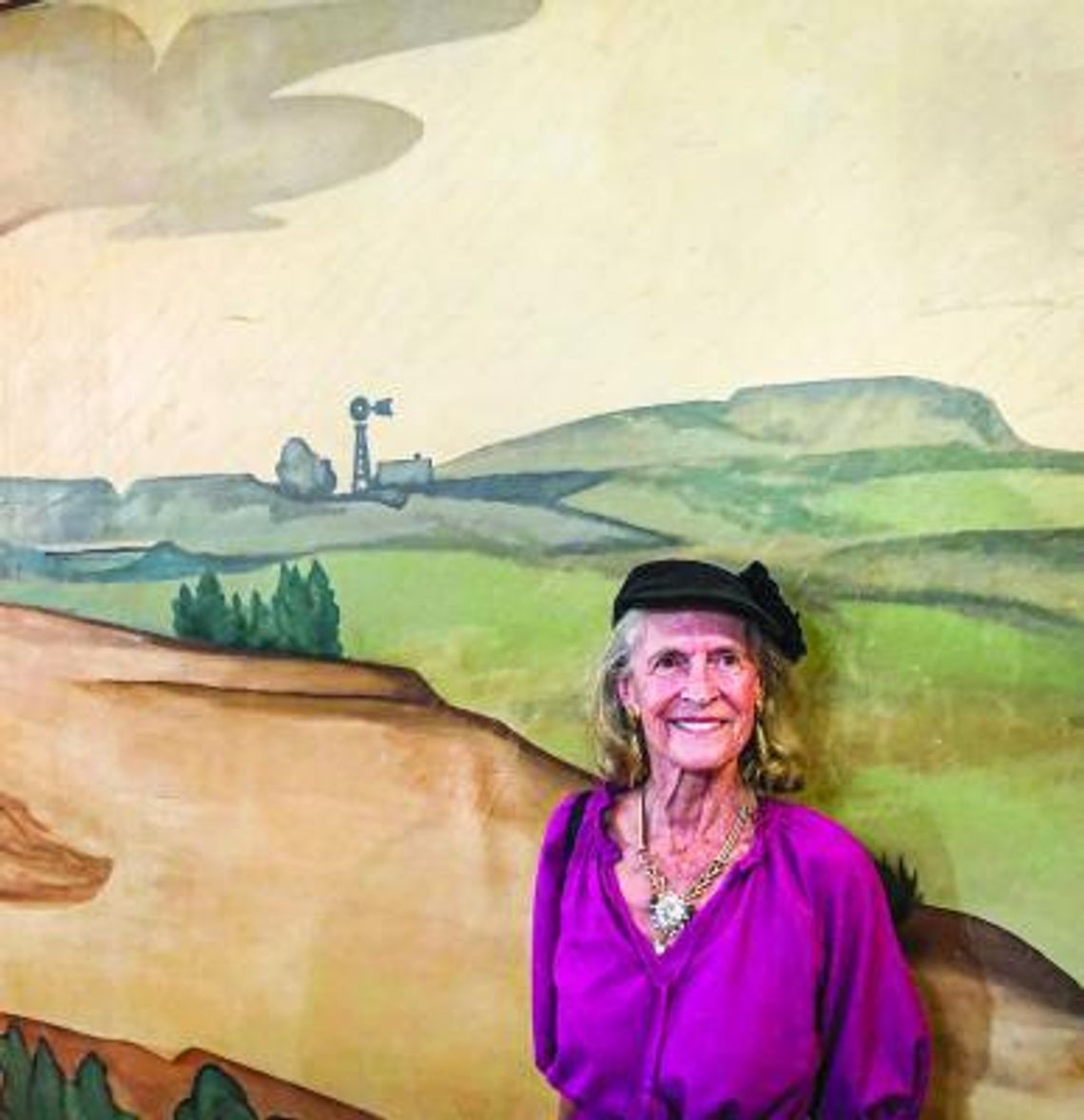James Buchanan (Buck) Winn (19051979) is considered one of the state’s best muralists.
The Texas-born artist was described as a renaissance man, according to J.W. Poe, president of the Wimberley Institute of Cultures. Winn was an architect, sculptor, inventor, he even received titles such as genius, innovator, and adventurer.
Recently, one of his works of art was permanently displayed in the Wimberley Valley Museum with a great deal of excitement.
“WIC is thrilled to have had a hand in saving the segments of Buck’s ‘History of Ranching’ mural, and to have been involved in getting the segments to locations where they could be restored and displayed,” Poe said. “Having this Buck Winn exhibit rolled out has been a goal of WIC for several years. As with many things, the COVID-19 restrictions of the last few years have slowed things down.”
ABOUT BUCK According to museum archives, it was during the 1930s that Winn painted murals for the Dallas Medical Arts Building, Highland Park Village Theater, Titche-Goettinger Building, Burrus Flour Mills, Telanews Theater, Hillcrest Mausoleum, the Sylvan Supper Club in Arlington, the Driscoll Hotel in Corpus Christi, the Blackstone Hotel in Fort Worth, and the Commercial National Bank of Shreveport, Louisiana (restored in 1987).
Winn assisted Eugene Savage to produce the murals for the Hall of State along with many other features in Fair Park for the Texas Centennial and World’s Fair in Dallas in 1936. Winn’s murals depict actual and mythical elements of Texas and Southwestern exploration, history and culture.
Winn and his family moved to a ranch in Wimberley in 1940, where he continued to produce other murals which included arguably his most famous mural, The “History of Ranching,” which he was commissioned to paint by the Pearl Brewery Company in San Antonio.
At the time, it was believed to be the longest mural in the world coming in at 280 feet. But in the early 1970’s, as the brewery went through remodeling, the mural was cut into several pieces and stored at the brewery and by all accounts forgotten for more than two decades.
It wasn’t until the early 1990’s Dr. Dorey Schmidt, a resident of Wimberley and founding member of WIC, not only tracked down the mural, but acquired it so generations to come could enjoy Winn’s work.
When it was all said and done, following hours of restoration, three sections of the mural can be seen in Johnson Hall at the Wimberley Community Center; and an 83-foot portion of the mural can be seen at the Albert B. Alkek Library on the campus of Texas State University. It includes an elaborate custom-fabricated support and frame, suspended from the library’s ceiling.
STABILIZATION After many years of storage, it’s safe to say there was plenty needed to be done to preserve the murals.
“The word they use is that the segment was ‘stabilized,’ not restored by FACL, Inc. (Fine Art Conservation Laboratories) of Goleta, California,” Poe said. “It is costly to have art like this worked on. We spent $2,000 plus shipping to have this stabilization work done and we feel like they gave us a bargain price. Full restoration, such as the work on the large segment of the “History of Ranching” mural that hangs in the Texas State Alkek Library, would be much more costly.”
Poe said he wasn’t sure how much Texas State spent on the murals, but recalls at least two significant fundraisers took place to accomplish their goal. “We all contributed,” Poe said. “WIC’s intent in having this segment stabilized for the museum exhibit is to halt further deterioration of the segment, while allowing it to be displayed for comparison/ contrast with the high-quality restoration of the other segments of the original 280-foot mural.”
During the evening’s unveiling of the mural on Sept. 19, Kathryn Winn Eoff (Tinka), daughter to the late artist, was on hand to enjoy seeing her dad’s work.
“This brings tears to my eyes,” Tinka said. “I mean, it just meant so much to me. I remember there was always big scaffolding and a ladder or something. They would be working, and I remember going in there with friends, we were all 10 or 12 years old, and they’d ask, ‘what’s your daddy doing?’ and I’d say working.”
Asked if she wished she was an artist herself, painting murals revered by generations to come, she politely said she was thankful things turned out just the way they did.
“Instead of wishing it for me I’m just thankful that it was my dad,” Tinka said. “That’s more important to me.”
ABOUT THE MUSEUM As for the museum, Poe said its primary goal is exposing guests to the history of the Wimberley Valley.
Visitors will see the museum’s front room full of storyboards with information about our early millers (William Winters ~1855-1864 … then his son in law John Cude 1864-1874 and then Pleasant Wimberley and his descendants from 1874 until the mill closed in 1925). The Wimberley descendants continued to live in the Winters-Wimberley House until the early 1990’s.
“Wimberley got its current name when a post office was proposed for the village in 1880, they first proposed Wimberleyville, but the postmaster said that was too long, so they shortened it to just Wimberley… and that’s what we’ve been ever since,” Poe said. “WIC also hosts various social/educational events throughout the year.”
Events include membership meetings, treks to historical and cultural points of interest, river blessing events on the Blanco River, Fireside Supper event in December.
Poe said their two main fundraising events are the Pie Social in the Spring and the Harvest Moon Dance in the Fall, which takes place on Nov. 6 this year at the historic Fischer Hall. The Harvest Moon Dance features silent and/or live auction items donated by the community to WIC alongside fun activities.
“We also apply for grants from time to time and rely on dues and donations from our WIC membership,” Poe said. “The expenses add up with the monthly water and power bills and the cost of insurance for the facilities. We might have other fund-raisers on an ad hoc basis.”
Poe said he’s always lived in Texas but when he retired from the Exxon Mobil Corporation in Houston in early 2016 Wimberley was in his sights.
“As a result, I jumped into learning the history of the Wimberley Valley with both feet,” Poe said. “And love being involved in WIC.”







